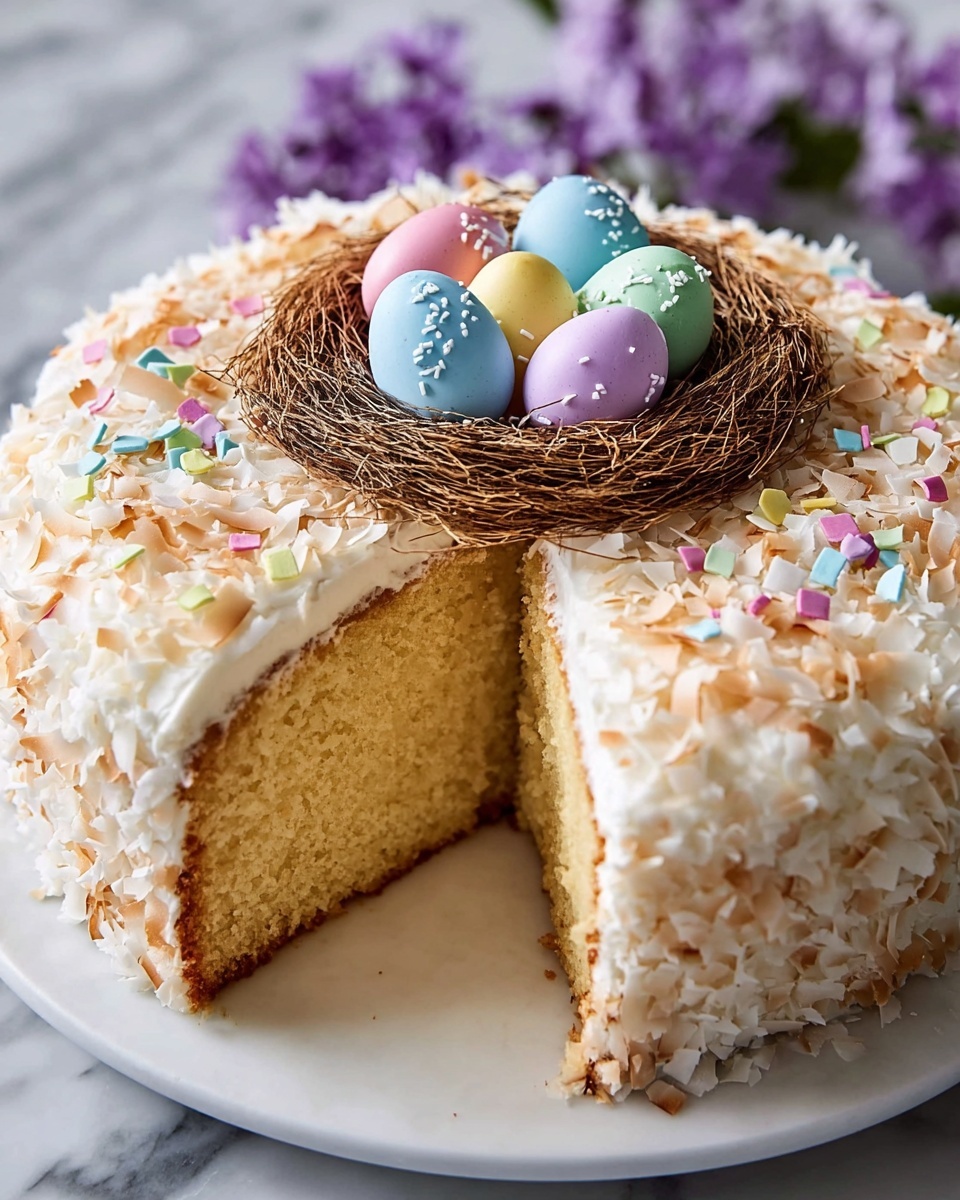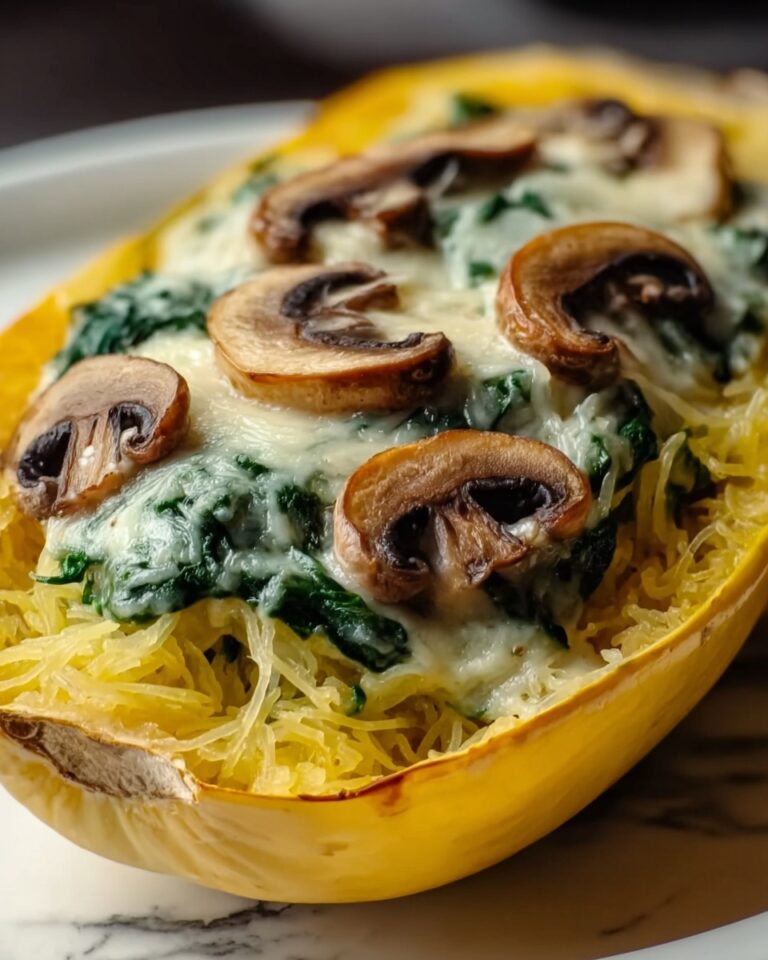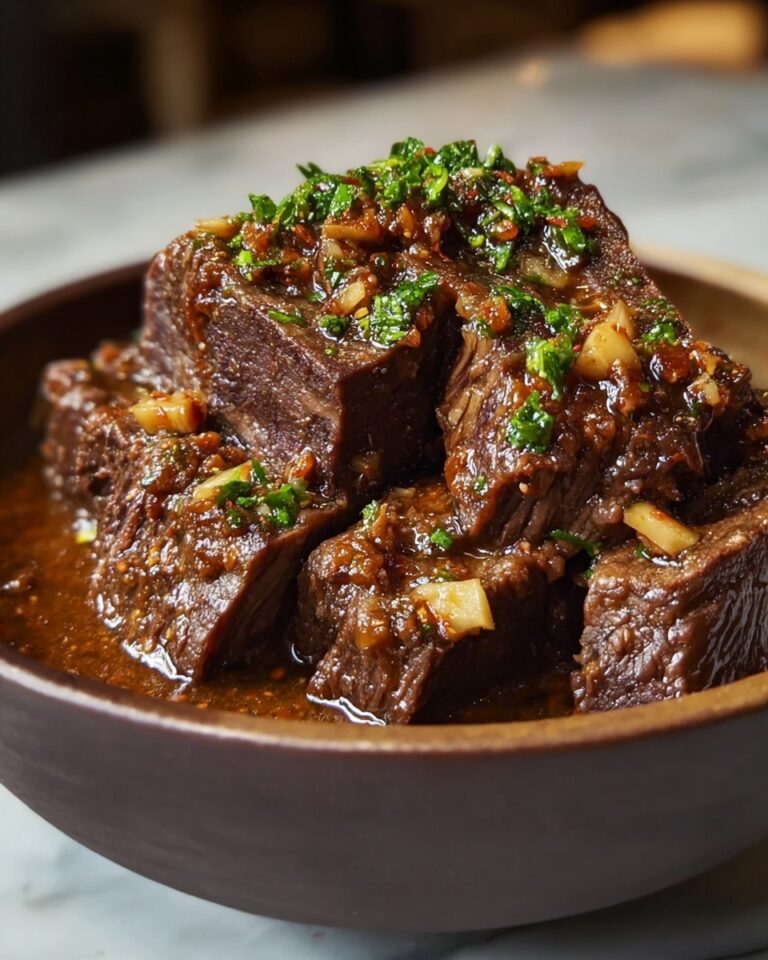If you are searching for a delightful centerpiece to brighten your Easter table, this Lemon Coconut Easter Bundt Cake with Chocolate Eggs Recipe is a must-try. Bursting with zesty lemon, tropical coconut, and a creamy frosting, it perfectly balances refreshing and indulgent flavors. The addition of colorful chocolate eggs on top brings a playful and festive touch that’s sure to enchant family and friends alike. Whether you’re a seasoned baker or just want a spectacular cake to celebrate spring, this recipe will quickly become a beloved tradition.

Ingredients You’ll Need
These ingredients are wonderfully straightforward yet essential for achieving the perfect texture, flavor, and vibrant look of this Lemon Coconut Easter Bundt Cake with Chocolate Eggs Recipe. Each piece plays a role from tender crumb to luscious frosting and joyful decoration.
- Cake Flour (3 cups / 360g): Provides a light, tender crumb essential for a moist bundt cake.
- Baking Powder (3 teaspoons): Ensures a fluffy rise so your cake is airy and soft.
- Baking Soda (½ teaspoon): Helps the cake rise just enough and balances acidity.
- Salt (½ teaspoon): Enhances all the flavors without overpowering.
- Unsalted Butter (1 cup, softened): Adds rich, creamy flavor and tenderness.
- Granulated Sugar (1 ¾ cups / 350g): Sweetens just right and aids in creating moistness.
- Lemon Zest (1 heaping tablespoon): Provides fresh citrus aroma and bright flavor bursts.
- Vegetable Oil (½ cup / 120ml): Keeps cake moist and adds softness.
- Large Eggs (5, room temperature): Bind ingredients together and contribute to lift.
- Pure Vanilla Extract (2 teaspoons): Enhances aroma and rounds out flavors beautifully.
- Coconut Extract (1 teaspoon): Infuses a tropical note without being overpowering.
- Full-fat Sour Cream or Plain Yogurt (½ cup / 120g): Brings tang and moisture for a tender crumb.
- Whole Milk (⅔ cup / 180ml): Helps keep the batter smooth and creates a perfect texture.
- Fresh Lemon Juice (¼ cup / 60ml): Adds zingy brightness and balances sweetness.
- Sweetened Flaked/Shredded Coconut (1 cup / 100g): Provides chewy texture and coconut flavor bursts inside the cake.
- Cream Cheese (8 ounces / 226g, softened): Forms the base of the luscious frosting.
- Unsalted Butter (¼ cup / 56g, softened): Adds richness and shape to the frosting.
- Confectioners’ Sugar (2 cups / 240g): Sweetens and thickens the frosting perfectly.
- Fresh Lemon Juice (1-2 tablespoons): Brightens the frosting’s flavor.
- Pure Vanilla Extract (1 teaspoon): Adds depth and warmth to the frosting.
- Sweetened Flaked/Shredded Coconut (1 ½ cups / 150g): Used for garnishing, adding texture and visual appeal.
- Candy-coated Chocolate Eggs (1-2 cups): The festive, colorful topping that makes this cake an Easter showstopper.
How to Make Lemon Coconut Easter Bundt Cake with Chocolate Eggs Recipe
Step 1: Preheat and Prepare Your Bundt Pan
Get your oven warmed up to 350°F (177°C) and generously grease a 10–12 cup Bundt pan to ensure your cake releases easily once baked. This step sets the stage for perfection, so don’t rush it!
Step 2: Mix the Dry Ingredients
In a medium bowl, whisk together the cake flour, baking powder, baking soda, and salt. This combination will deliver the right texture and structure to your cake, so make sure they’re well combined for even distribution.
Step 3: Cream the Butter, Sugar, and Lemon Zest
Using a mixer, beat the softened butter, granulated sugar, and fresh lemon zest until the mixture becomes light, fluffy, and creamy. This process incorporates air, which helps your cake rise beautifully and have that melt-in-your-mouth feel.
Step 4: Add the Oil, Eggs, and Extracts
Pour in the vegetable oil and mix until combined. Then, add the eggs one at a time, mixing well after each to create a velvety batter. Finally, stir in the sour cream, pure vanilla, and coconut extracts. These add bold flavor layers and moisture that make the cake irresistibly tender.
Step 5: Combine the Wet and Dry Ingredients with Lemon-Milk Mixture
Whisk the fresh lemon juice and whole milk together. Then alternate adding the dry ingredients and the lemon-milk mixture to the wet batter, mixing gently until just combined. Be careful not to overmix; this keeps the crumb soft. Finally, fold in the shredded coconut for bursts of chewy texture and that tropical touch.
Step 6: Bake Your Bundt Cake
Pour the batter evenly into your prepared Bundt pan, smoothing the top gently. Bake for 55 to 65 minutes until the cake is golden and a toothpick inserted in the center comes out clean. After baking, let the cake cool in the pan for two hours—this resting time helps the cake firm up and makes unmolding easier.
Step 7: Prepare the Cream Cheese Frosting
Beat the softened cream cheese and butter together until silky smooth. Gradually add confectioners’ sugar, fresh lemon juice, and vanilla extract, continuing to beat until the frosting is creamy and spreadable. This lemony frosting perfectly enhances the cake’s flavors while adding richness.
Step 8: Frost and Decorate the Cake
Once your cake is completely cooled, spread the cream cheese frosting evenly over it. Sprinkle the shredded coconut over the top for a snowy effect, then fill the Bundt’s center with plenty of colorful candy-coated chocolate eggs. It’s the festive garnish that brings the Lemon Coconut Easter Bundt Cake with Chocolate Eggs Recipe to life!
How to Serve Lemon Coconut Easter Bundt Cake with Chocolate Eggs Recipe

Garnishes
The shredded coconut gives a delicate crunch and snowy appearance, but for a fresh twist, add zest or thin lemon slices atop the frosting. The colorful chocolate eggs are both decorative and a delightful surprise for guests as they cut into the cake.
Side Dishes
Serve this cake alongside a light berry compote, fresh fruit salad, or even a dollop of whipped cream to balance its richness and add bright complementary flavors. A cup of herbal tea or freshly brewed coffee also elevates the entire experience.
Creative Ways to Present
Try placing your Bundt cake on a decorative Easter-themed cake stand or platter. Surround it with spring flowers or pastel-colored napkins for a festive table display. For a fun twist, serve smaller slices on plates sprinkled with extra shredded coconut and a few chocolate eggs.
Make Ahead and Storage
Storing Leftovers
Store any leftover cake in an airtight container in the refrigerator for up to 4 days. This keeps the cream cheese frosting fresh and the cake moist. Before serving, let it sit at room temperature for about 30 minutes to bring back that soft, tender texture.
Freezing
You can freeze the cake without frosting for up to 2 months. Wrap it tightly in plastic wrap and then in foil. When ready to enjoy, thaw the cake overnight in the refrigerator, then frost and decorate fresh to maintain the best flavor and texture.
Reheating
If you prefer to enjoy a slice slightly warmed, let it come to room temperature and gently warm in the microwave for 15-20 seconds. Avoid heating too long, which can dry out the cake or melt the frosting excessively.
FAQs
Can I use unsweetened coconut instead of sweetened for this cake?
Yes, you can substitute unsweetened coconut if you prefer less sweetness, but keep in mind this may slightly alter the overall taste and texture, making it less moist and sweet. You might want to adjust the sugar in the recipe accordingly.
Is it necessary to use both coconut extract and shredded coconut?
While both enhance the coconut flavor, you can use one without the other if needed. The extract adds a subtle, concentrated flavor, while shredded coconut provides texture. Using both gives the most balanced and enjoyable coconut profile.
How do I ensure my bundt cake doesn’t stick to the pan?
Greasing the pan thoroughly with butter or a non-stick spray is key. You might also dust the greased pan lightly with flour or use a baking spray with flour included. After the cake cools for two hours, invert it gently to release.
Can I make this cake dairy-free or vegan?
This recipe relies on dairy and eggs for texture and flavor, but you could experiment with dairy-free cream cheese, yogurt, and vegan egg substitutes. Keep in mind the texture and flavor may differ slightly, so testing is recommended.
Why does the recipe call for both sour cream and vegetable oil?
The sour cream adds moisture and a slight tang, helping to tenderize the crumb, while the vegetable oil keeps the cake moist and soft. Using both results in a perfect balance of richness without heaviness.
Final Thoughts
This Lemon Coconut Easter Bundt Cake with Chocolate Eggs Recipe is truly a crowd-pleaser that combines festive charm with fresh, delicious flavors. It’s a wonderful way to bring brightness and joy to your Easter celebrations, creating moments to savor with loved ones. I encourage you to bake it soon and experience firsthand the magic of this delightful cake on your holiday table.
Print
Lemon Coconut Easter Bundt Cake with Chocolate Eggs Recipe
- Prep Time: 30 minutes
- Cook Time: 1 hour 5 minutes
- Total Time: 4 hours 0 minutes (including cooling)
- Yield: 12 servings
- Category: Dessert
- Method: Baking
- Cuisine: American
- Diet: Vegetarian
Description
This delicious Easter Cake recipe features a moist lemon coconut Bundt cake with a creamy lemon cream cheese frosting. It’s adorned with toasted coconut and colorful candy-coated chocolate eggs, making it a festive treat perfect for Easter celebrations or springtime gatherings.
Ingredients
Dry Ingredients
- 3 cups (360g) cake flour, spooned & leveled
- 3 teaspoons baking powder
- ½ teaspoon baking soda
- ½ teaspoon salt
Wet Ingredients & Cake Batter
- 1 cup (226g) unsalted butter, softened
- 1 ¾ cups (350g) granulated sugar
- 1 heaping tablespoon lemon zest
- ½ cup (120ml) vegetable oil
- 5 large eggs, room temperature
- 2 teaspoons pure vanilla extract
- 1 teaspoon coconut extract
- ½ cup (120g) full-fat sour cream or plain yogurt, room temperature
- ⅔ cup (180ml) whole milk, room temperature
- ¼ cup (60ml) fresh lemon juice
- 1 cup (100g) sweetened flaked/shredded coconut
Frosting
- 8 ounces (226g) full-fat brick cream cheese, softened
- ¼ cup (56g) unsalted butter, softened
- 2 cups (240g) confectioners’ sugar
- 1–2 tablespoons fresh lemon juice
- 1 teaspoon pure vanilla extract
Decoration
- 1 ½ cups (150g) sweetened flaked/shredded coconut
- 1–2 cups candy-coated chocolate eggs (e.g., Cadbury Mini Eggs)
Instructions
- Preheat & Prep: Preheat your oven to 350°F (177°C). Grease a 10-12 cup Bundt pan thoroughly to ensure the cake does not stick.
- Dry Ingredients: In a medium bowl, whisk together the cake flour, baking powder, baking soda, and salt until fully combined. Set aside.
- Cream Butter & Sugars: Using a mixer, cream the softened unsalted butter, granulated sugar, and lemon zest together until the mixture is light and creamy. Add vegetable oil and continue mixing. Then add the eggs one at a time, mixing well after each addition. Incorporate sour cream, vanilla extract, and coconut extract into the batter.
- Combine Wet & Dry: In a separate small bowl, whisk together fresh lemon juice and whole milk. Alternately add the dry ingredient mixture and the lemon-milk mixture to the wet ingredients, mixing until just combined. Gently fold in the sweetened shredded coconut to finish the batter.
- Bake: Pour the batter into the prepared Bundt pan, smoothing the top. Bake in the preheated oven for 55-65 minutes or until the cake is golden brown and a toothpick inserted in the center comes out clean. Allow the cake to cool in the pan for 2 hours, then invert onto a serving plate and let cool completely.
- Make Frosting: In a mixing bowl, beat together the softened cream cheese and butter until smooth and creamy. Gradually add confectioners’ sugar, then lemon juice and vanilla extract. Continue beating until the frosting is light and fluffy.
- Frost & Decorate: Spread the frosting evenly over the cooled cake. Sprinkle the top with additional shredded coconut and fill the center cavity of the Bundt cake with candy-coated chocolate eggs for a festive touch.
- Serve: Serve the cake immediately, or refrigerate it. If refrigerated, allow the cake to sit at room temperature for about 30 minutes before serving for the best flavor and texture.
Notes
- Make sure all refrigerated ingredients are at room temperature for best mixing results.
- Use fresh lemon juice and zest for the brightest lemon flavor.
- To toast the coconut for garnish, lightly brown it in a dry skillet over medium heat, stirring frequently.
- Storage: Store covered in the refrigerator for up to 3 days; bring to room temperature before serving.
- For a dairy-free version, substitute sour cream and cream cheese with plant-based alternatives.








